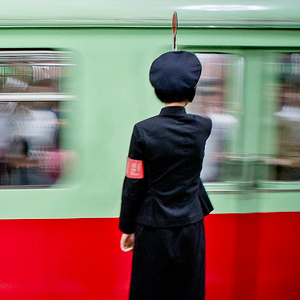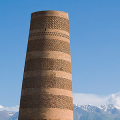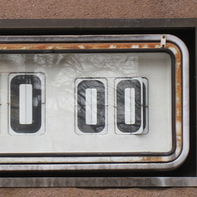The Working Day in North Korea
What’s it like to live and work in one of the most mysterious countries in the world?
A new book shines a spotlight on the working day in Pyongyang, North Korea. Here are a few of my favorite points, as reproduced by the Guardian:
Apartment life is a challenge.

“Those who live on higher floors may have to set out for work or school a little earlier than those lower down. Due to chronic power cuts, many elevators work only intermittently, if at all. Many buildings are between 20 and 40 storeys tall – there are stories of old people who have never been able to leave.
Even in the better blocks elevators can be sporadic and so people just don’t take the chance. Families make great efforts to relocate older relatives on lower floors, but this is difficult and a bribe is sometimes required.”
Electricity requires coordination.

“Every day people liaise with their neighbors about the electricity situation. A large proportion of Pyongyang operates an ‘alternative suspension of electricity supply’ system, meaning that when buildings on one side of the street are blacked out, the other side of the street gets power. When the alternation time arrives there is a mad rush of children as they head for their friends’ apartments across the road.”
Commuters ride to work on the East Berlin metro.
“The Pyongyang Metro, closed to foreigners, consists partly of carriages acquired from East Berlin after Germany was unified.”

Education is standardized.

“All children study Kim Il-sung’s life closely. Learning to read means learning to read about Kim Il-sung; music class involves singing patriotic songs. Rote learning and memorizing political tracts is integral and can bring good marks, which help in getting into university – although social rank is a more reliable determinant of college admission.”
As you’d probably expect, career options are limited.

“After graduation, the state decides where graduates will work.”
Lunchtime is quiet.

“Larger workplaces have a canteen serving cheap lunches, such as corn soup, corn cake and porridge. The policy of eating in work canteens, combined with the lack of food shops and restaurants, means that Pyongyang remains strangely empty during the working day with no busy lunchtime period, as seen in other cities around the world.”

“Those who live on higher floors may have to set out for work or school a little earlier than those lower down. Due to chronic power cuts, many elevators work only intermittently, if at all. Many buildings are between 20 and 40 storeys tall – there are stories of old people who have never been able to leave.
Even in the better blocks elevators can be sporadic and so people just don’t take the chance. Families make great efforts to relocate older relatives on lower floors, but this is difficult and a bribe is sometimes required.”
Electricity requires coordination.

“Every day people liaise with their neighbors about the electricity situation. A large proportion of Pyongyang operates an ‘alternative suspension of electricity supply’ system, meaning that when buildings on one side of the street are blacked out, the other side of the street gets power. When the alternation time arrives there is a mad rush of children as they head for their friends’ apartments across the road.”
Commuters ride to work on the East Berlin metro.
“The Pyongyang Metro, closed to foreigners, consists partly of carriages acquired from East Berlin after Germany was unified.”

Education is standardized.

“All children study Kim Il-sung’s life closely. Learning to read means learning to read about Kim Il-sung; music class involves singing patriotic songs. Rote learning and memorizing political tracts is integral and can bring good marks, which help in getting into university – although social rank is a more reliable determinant of college admission.”
As you’d probably expect, career options are limited.

“After graduation, the state decides where graduates will work.”
Lunchtime is quiet.

“Larger workplaces have a canteen serving cheap lunches, such as corn soup, corn cake and porridge. The policy of eating in work canteens, combined with the lack of food shops and restaurants, means that Pyongyang remains strangely empty during the working day with no busy lunchtime period, as seen in other cities around the world.”
***
When I was in Seoul a few years ago, I took a tour of the Panmunjom / DMZ area that divides the two Koreas. As part of that tour I crossed over to the other side.
However, I’d be the first to say that I haven’t done a “proper” North Korea trip. I hope to make it there at some point… though I’ll be sure to bring plenty of snacks.
###
Link: Guardian







